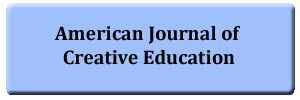Profiling Students for Online Teaching and Learning Environments: A Case for the University of Namibia, Rundu Campus
DOI:
https://doi.org/10.55284/ajel.v7i1.625Keywords:
Online learning, Online-learning environment, Student profiling, Digital literacy, Higher education, Preferred mode of learning, Frequency of access to devices, COVID19.Abstract
The purpose of the study, through a survey 1) established the devices that students have access to and the mode of internet connection, 2) described students’ level of digital literacy, 3) established their preferred mode of learning, and 4) established their frequency of access to the devices. About 441 1st year students enrolled for Integrated Media and Technology Education 1 at the University of Namibia, Rundu Campus were targeted. About 63 students responded to the web-based questionnaire items via a WhatsApp group. The study found that students limitedly access their work via smartphones and laptops. Participants preferred to work in groups and were able to regulate their own learning. Therefore, educators need to use a variety of instructional materials in order to align to students learning styles during Coronavirus (COVID-19) pandemic when moving teaching and learning activities to online-learning environment as a strategy for remote learning.



